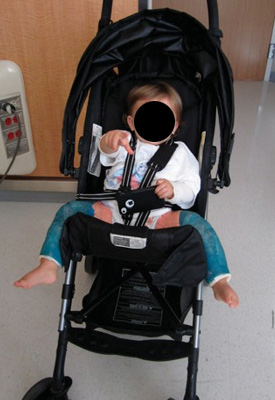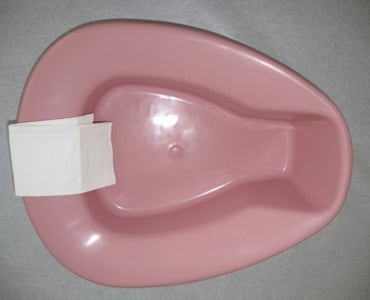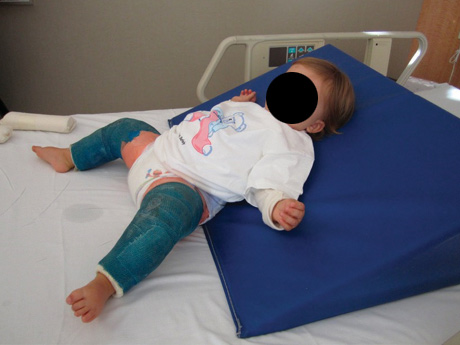Tips for Caring for Your Child in a Spica Cast
As if having an infant or young child with an orthopedic condition requiring treatment isn’t enough, now you are told your child will need a spica cast. While it seems insurmountable to care for a child in a spica cast, many parents have walked this road before and have succeeded. You will too!
What is a spica cast?
A spica cast (also called a hip spica cast or body cast) is an orthopedic cast that stabilizes a femur fracture or a hip joint after surgery for hip dysplasia in infants and young children. The cast, which is made of fiberglass with a soft lining inside, immobilizes the thigh, hip, and pelvis. The cast covers the chest, one or both thighs, and may extend below the knees and/or ankles. Special care is needed when changing diapers, cleaning, and transporting children who have a spica cast.

When is a spica cast required?
A spica cast is needed to treat femur fractures and hip dysplasia in young children. A spica cast is the standard of care for management of femur fractures for children younger than five years old weighing less than 50 pounds. The location and pattern of the femur fracture determine how much of the injured lower extremity will be secured in the spica cast. Often, both legs may be casted. The spica cast is also utilized to keep the hip joint stable to facilitate healing of the bones and soft tissue structures in infants and young children treated for developmental dysplasia of the hip.
How do I care for a spica cast?
Over time, the spica cast will become a little dingy, but it is best to keep it as clean and dry as possible. You will need to sponge-bathe your child. A waterproof liner that is adjacent to the body helps with bowel and bladder hygiene, but the cast is not waterproof. If the cast gets wet, it is best to call your doctor because the moisture will quickly irritate the skin beneath the cast. If the cast is a little damp from sponge bathing or cleaning the groin area, it is fine to use a hair dryer on a cool setting to dry the cast.
Spica cast childcare tips
- Children in spica casts need hugs too! First and foremost, remember that your child will need your love and gentleness more than he or she needs a spotless cast.
- Be prepared. Here is a list of helpful items for your home:
- A special car seat with a wider base may be necessary for your child, as your child will probably not fit in the regular car seat in the spica cast. The hospital team will discuss options with you.
- A reclining wheelchair, special stroller, or wagon. The hospital physical therapist will help you determine which equipment will work best for your child.
Smaller children may fit in a stroller or a wagon using pillows and a seatbelt. A jogger stroller is wider and can be used for larger infants and toddlers.
For older children, you may rent a reclining wheelchair — usually in advance of admission to the hospital. Speak to your healthcare team for assistance.
-
Diapers in two sizes – one to tuck inside the cast and one to fit outside. (You will need to check and change your childʼs diaper more frequently than usual to keep the cast dry.)
 Small and larger diaper.
Small and larger diaper. Tuck small diaper inside front.
Tuck small diaper inside front. Front tucked.
Front tucked. Tuck small diaper inside back.
Tuck small diaper inside back. Back tucked.
Back tucked. Wrap large diaper outside cast.
Wrap large diaper outside cast. Diapering complete.
Diapering complete. - Sanitary napkins placed inside the inner diaper for extra absorbency at night and/or incontinence pads for infants and toddlers.
- A bedpan or urinal for older children.

- Moleskin for rough edges of the cast and to keep the waterproof liner in place.
- A hair dryer with a cool setting.
- A flashlight to use to see into the cast to check the skin for sore areas.
- Check your child’s skin frequently, especially under the edges of the cast, about three times a day.
- Change your child’s position to prevent pressure sores from being in one position for too long.
- Check the toes for swelling, movement, and discoloration three times a day.
- Use a flashlight to carefully look for reddened areas under the cast, sores, or blisters.
- You can bathe your child in a spica cast but it must be a sponge bath.
- Use a lightly damp wash cloth to clean the skin under the cast. This is a good chance to carefully examine the skin for any sores or abrasions.
- Do not use powders or lotions near the cast edges or inside the cast as they can irritate the skin.
- Gravity is your friend. Keep the chest above the hips to help direct urine into the diaper and to keep it from pooling in the cast.
- A change of scenery is good for everyone. Remember to keep your child restrained in any vehicle, highchair, or stroller/wheelchair.
- Due to inactivity, constipation can become a problem. Make sure to include fruits and vegetables in your child’s diet.
- Dresses and sweatpants work great. Underpants can be altered to have a Velcro closure for older children.
- It is best to lift your child by supporting the back and both legs, rather than under the arms.
- This too shall pass. Having a child in a spica cast is challenging. You are not alone. Make sure to call your doctor’s office with any questions or concerns.
Keeping your child comfortable
- Make sure your childʼs back is supported, so your child does not slip down inside the cast.
- Keeping your childʼs upper body and head slightly elevated during sleep allows gravity to help direct urine into the diaper rather than pooling in the cast. You can also prop your child on pillows or elevate the entire head of the crib mattress.

- You may use a rubber wedge to prop up your child (as shown above).
- A beanbag chair is also useful. It molds to your child and you can place them in almost any position, from reclining to more upright. Smaller beanbags can be used for support.
- Turn your child from front to back or side to side every two to four hours during the day, and as often as you can during the night. For children under one year of age, current American Academy of Pediatrics guidelines recommend sleeping on the back until one year of age.
- If your child prefers to sleep on their belly, you may place a pillow beneath the hip/thigh area and under their chest. This helps to prevent muscle spasms in the groin area while sleeping.

Make sure your child is always supervised while they are in these positions.
Itching
- If your child has unbearable itching, you may give them children's Benadryl. If this does not help, call your childʼs doctor.
- You may use a hair dryer on a cool or cold setting to blow cool air under the cast edges to help relieve itching.
- Warm and hot settings can cause burns.
Clothing options
It may take a few tries to find clothes that will fit over the spica cast.
Most shirts and dresses will fit over the cast. Large sweatpants can usually be worn as well.
If your child is toilet-trained, underpants can be altered to have a Velcro closure on the side.
Diet
As your child will be less active while in the spica cast, constipation may become a problem.
Offer your child a variety of fiber-rich foods such as fruits, vegetables, and whole grain breads and cereals to prevent constipation. Also encourage plenty of water and extra fluids.
Smaller, more frequent meals are recommended.
Important safety tips
- Your childʼs surgeon may place a bar between the legs of their cast. DO NOT USE THE BAR TO LIFT YOUR CHILD. THE BAR AND CAST CAN BREAK.
- Always keep side rails up on cribs.
- Always use seat belts for safety when your child is in an automobile, stroller/wheelchair, or highchair.
- Do not allow your child to stick any objects (i.e., coat hangers, pencils, coins, erasers, etc.) under the cast because it may injure the skin.
- Keep a bib or t-shirt over the cast to prevent small objects, such as toy parts, coins, or crumbs from getting into the cast.
- When lifting, carrying, or repositioning your child, make sure to support the underside of the cast and never lift them from their arms.
If an object falls into the cast, please call your surgeon’s office immediately.
Call your doctor if you notice any of the following
- Bluish discoloration of the toes or feet.
- Inability to move toes or feet.
- Cast badly stained with stool.
- Cast soaked with urine.
- Skin irritation around or under the cast.
- Cracked or broken cast, areas of softening.
- Foul odor coming from the cast, any drainage, or staining.
- Cast being too tight or too loose.
- An object falling inside of the cast.
- Your child being more fussy or irritable than usual, and you cannot find a reason for it.
Call your doctor’s office for any other problems or concerns. If it is after regular office hours, the on-call physician will be contacted immediately. For additional information about caring for your child in a spica cast visit spicalife.com



